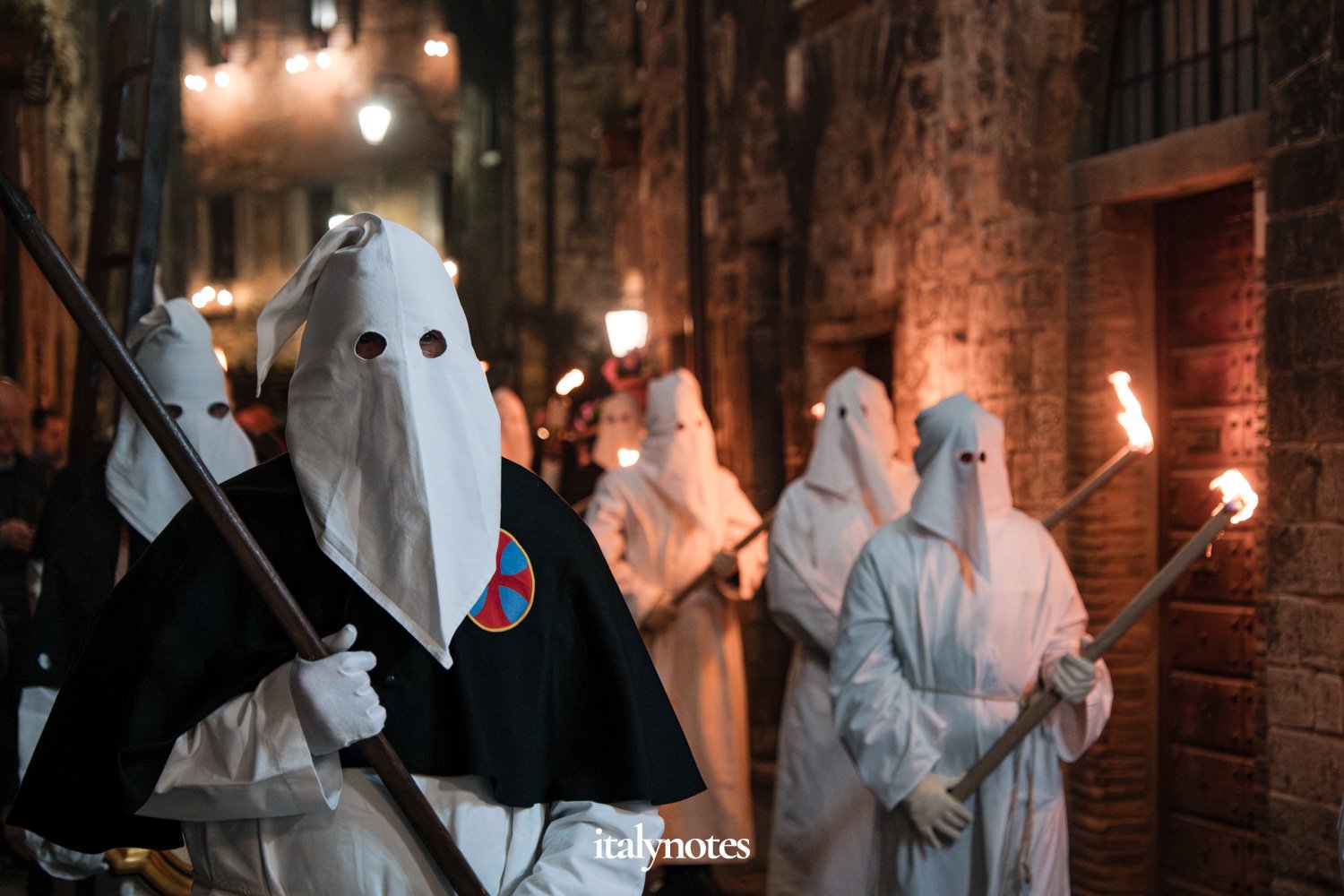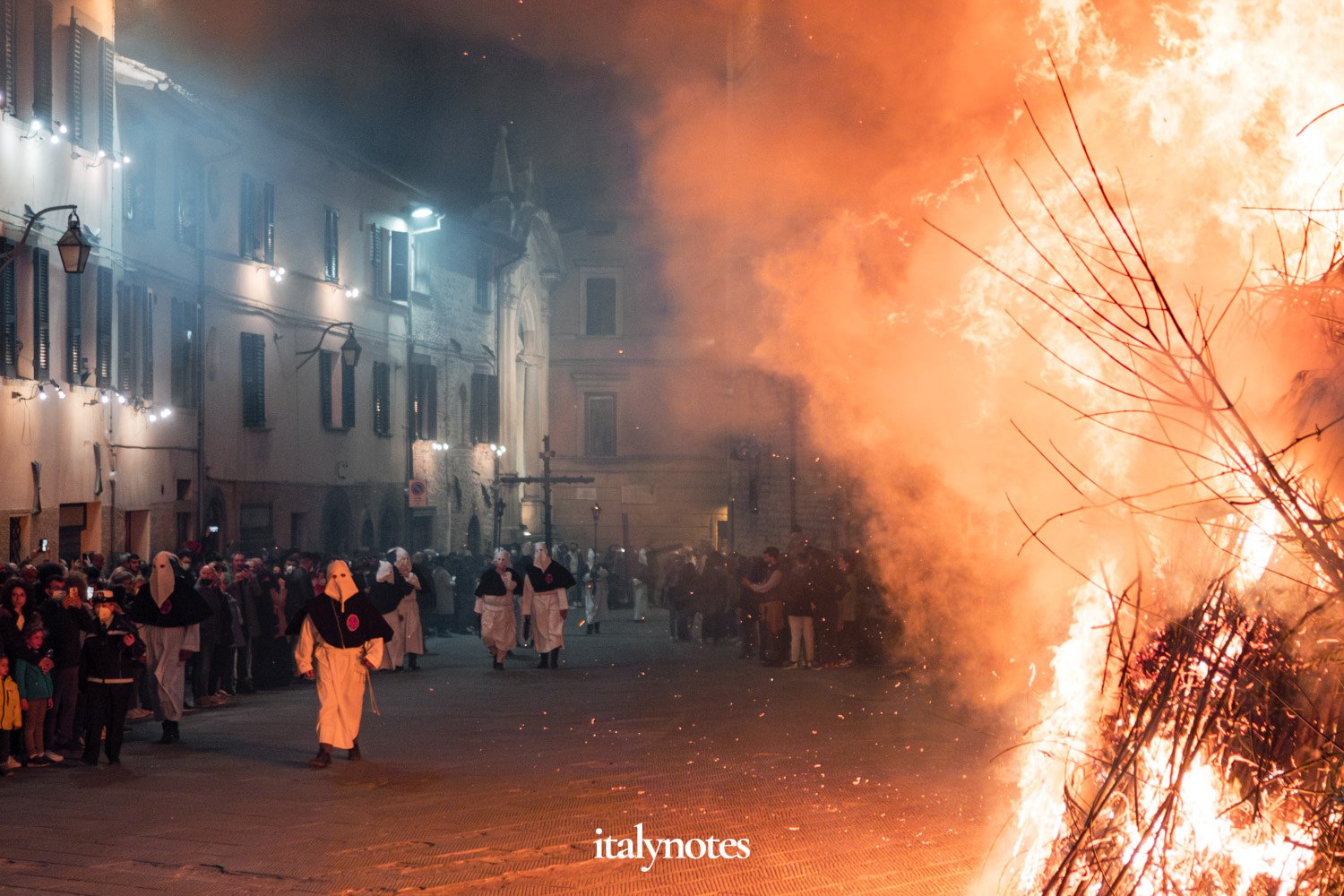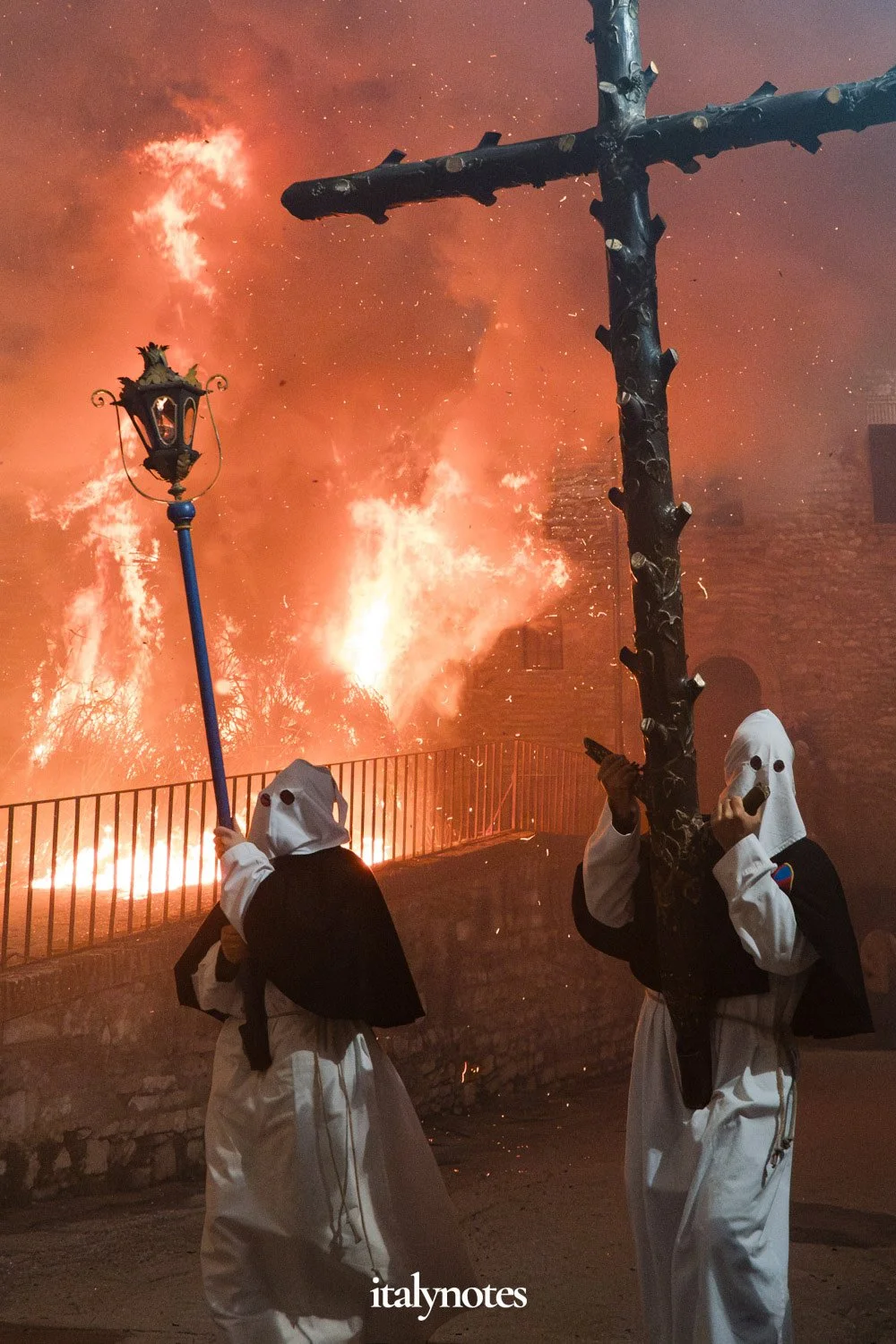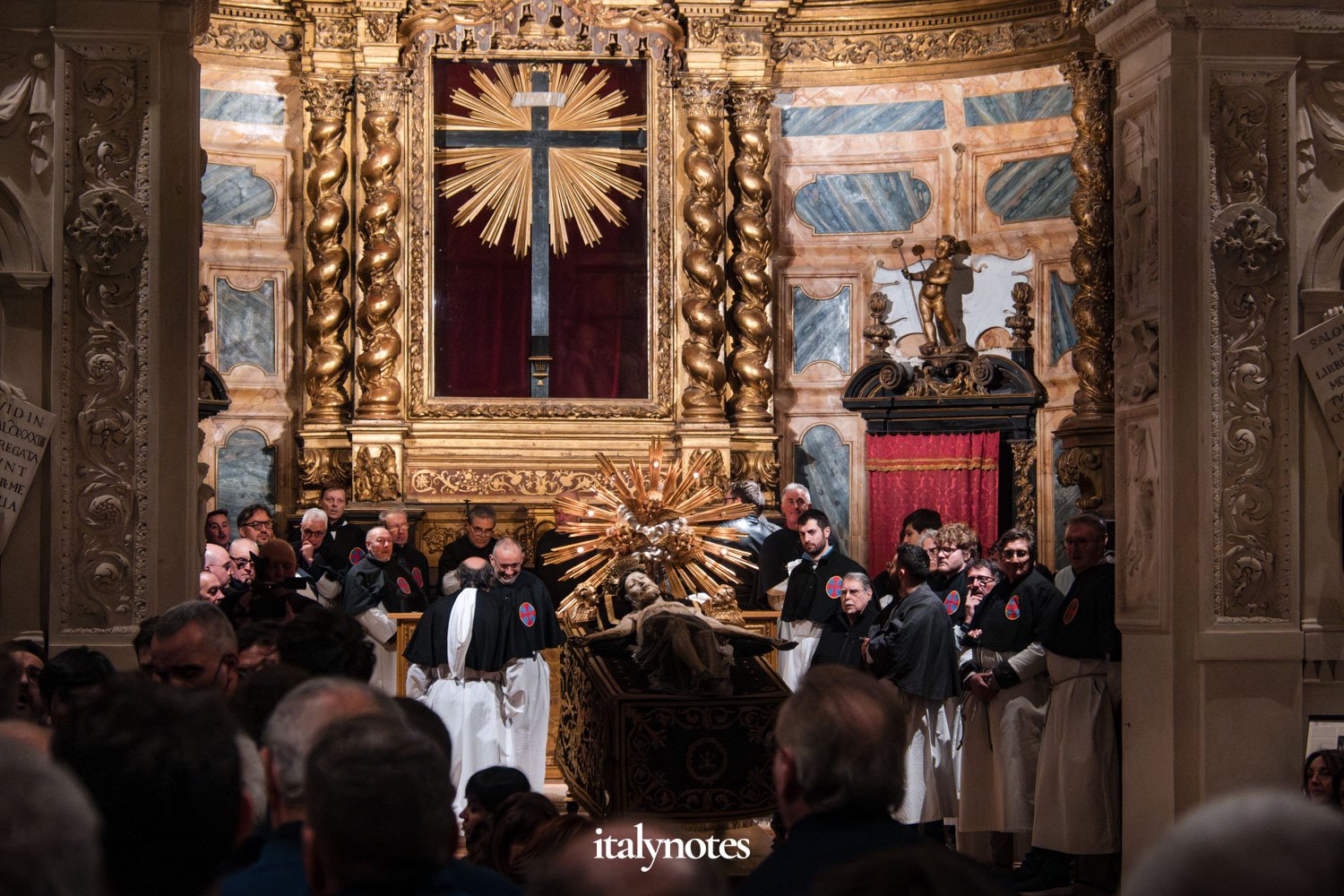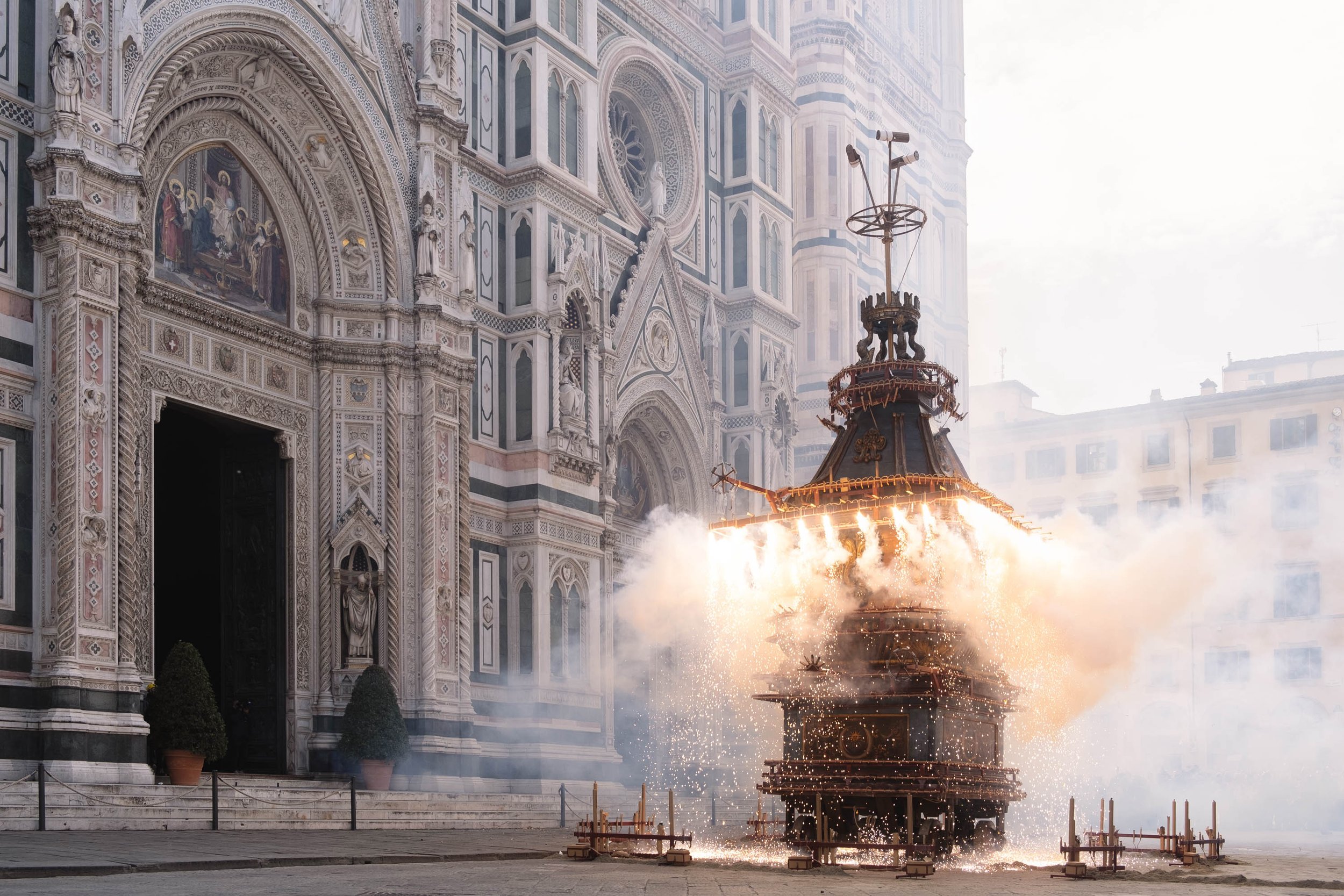Procession of the Dead Christ: commemorating Jesus' sacrifice
Last updated: April 2024
No matter what time of year you visit Italy, there's always something going on. Alongside the charming towns and monuments to explore, Italians are experts at orchestrating lively celebrations. These festivities are often connected to venerable rites and significant moments in history. Think, for instance, of the Festa della Repubblica, Natale di Roma, or Carnevale di Venezia. Participating in (local) festivals like these is hands down the best way to experience Italy's rich and authentic culture.
I feel fortunate to have had the chance to participate in various celebrations. One of them stands out in particular: the Processione del Cristo Morto, or the Procession of the Dead Christ in Gubbio. In this post, I'll delve into this special event filled with symbolic meaning.
With its serene atmosphere and narrow medieval streets, Gubbio is truly one of Umbria's hidden gems.
The Processione del Cristo Morto is one of Gubbio's most important religious events. Its origins trace back to medieval times, particularly around the 13th century. During this period, religious dramas and reenactments were common forms of expression aimed at bringing biblical stories more alive. The Procession of the Dead Christ is what remains of these dramas and forms a symbolic representation of the Passion of Christ.
The venerated statue of the Dead Christ inside the Chiesa di Santa Croce della Foce.
The event takes place annually on Good Friday. Throughout the day, most of Gubbio's residents visit the Chiesa di Santa Croce della Foce (Google Maps), a small church located just outside the city gate. They come to pray before two statues. The first statue depicts Jesus in his final moments, with his head leaning on his right shoulder and his eyes half-closed. It closely resembles the description in John 19:30.
When Jesus had received the sour wine, He said, "It is finished!" Then, bowing His head, He gave up His spirit.
The second figure, crafted from paper-mâché, represents Our Lady of Sorrows. Both statues will be carried through the streets of Gubbio during the procession later that day.
The venerated statue of the Dead Christ (left) and the statue of Our Lady of Sorrows (right). Throughout the day, people come to worship and pray before the two statues.
While strolling through town, you'll notice the final preparations being made for the procession. In each of Gubbio's four quarters, men are preparing large 'focaroni.' These bonfires symbolize an act of purification and will be ignited moments before the procession draws near.
Preparations for the 'focarone' on Via Dante Alighieri (left). I was somewhat surprised to see how close the large pile of wood was placed next to the church. At the end of the street, in front of the Chiesa di San Marziale, men were setting up another bonfire (right).
As the afternoon progresses, you might also encounter a group of four confraternity members making their way through Gubbio's medieval streets. As they do, they play the 'battistrangole,' a wooden instrument designed to produce a loud rattling noise. In the past, these instruments were used to announce the procession of those sentenced to death. Fortunately, this Friday, they merely signal the impending start of the Procession of the Dead Christ.
As the afternoon comes to an end, four confraternity members make their way through the medieval streets of Gubbio, using rattling instruments to announce the imminent start of the procession.
At 7:30 PM, the procession begins and departs from the Chiesa di Santa Croce della Foce. Leading the procession are four confraternity members, who again play the battistrangole.
I'm pretty sure their distinctive attire will raise some eyebrows, so let me explain. The fraternity tunics are white and known as 'sacconi.' Each saccone is fastened with a cord, recalling the ropes with which Christ was bound. In earlier times, these cords ended with scourges used to strike each other as an act of penance.
Confraternity members playing the battistrangole, and the 'Tree of Life' in the background.
The saccone is typically worn with a hood, or 'buffa,' which covers the entire face, leaving only small openings for the eyes. The confraternity members cannot be identified by wearing these hoods, symbolizing the anonymity of good deeds and the annulment of social class differences. It underscores the notion that we are all equal in Jesus's eyes.
Most confraternity members also wear a 'mozzetta' (short cape) over their saccone. Members affiliated with the 'Compagnia del Crucifixo' wear a black mozzetta, while those belonging to the 'Compagnia della Madonna del Carmelo' have a blue one. Each mozzetta features the coat of arms of the Brotherhood of Santa Croce, formed by a red patent cross against a blue background.
A member of the confraternity carries a skull symbolizing Golgotha (left), bearing the inscription "Così sarai un dì." The skull bearer is followed by the 'Tree of Life' and several other brothers carrying large wooden crosses (right).
Now, back to the procession. The four brothers playing the battistrangole are followed by another member carrying a skull. This skull symbolizes Golgotha, the hill outside Jerusalem's walls where Jesus was crucified. From up close, you can see an inscription on top of the skull that reads "Così sarai un di." The phrase translates to "So you will be one day." It suggests that just as others have lived and eventually passed away, so will we one day. This reflection on mortality should encourage us to contemplate life's impermanence and to live each day with awareness and purpose.
The procession winds its way through Gubbio's medieval streets.
Next in line is a fellow brother who carries a large cross known as the 'Tree of Life.' While I'm not entirely sure, I believe it alludes to Genesis 2:9 and represents the assurance of eternal life through Christ.
The Lord God made all kinds of trees grow out of the ground—trees that were pleasing to the eye and good for food. In the middle of the garden were the Tree of Life and the Tree of the Knowledge of Good and Evil.
As the sky quickly darkens, the procession moves through Gubbio's four neighborhoods. Along the way, each quarter lights its focarone. Here, you can see the focarone on Via Dante Alighieri being lit just moments before the procession passes.
The procession continues with a group of confraternity members carrying 26 Symbols of the Passion. Each symbol serves as a visual reminder of Christ's suffering and death, as described in the Gospel. Among the symbols are the crown of thorns, the rooster that crowed after Peter's third denial of Jesus, and the ladder used for the Deposition.
The 'Tree of Life' towers over the procession (top left) and is followed by several other large crosses. Behind them comes a group of confraternity members, carrying 26 Symbols of the Passion. Here you can see the ladder used for the deposition from the cross (top right), the pillar to which Jesus was tied and flogged, and the scourge symbolizing the flagellation Jesus endured before his crucifixion (below).
Behind the Symbols of the Passion comes a group with large torches provided by the municipality, the Arts and Crafts Corporations, and various citizen associations. Gubbio's clergy and bishop are among this group as well.
The procession proceeds along Via Perugina to the Mausoleo dei 40 Martiri. This serves as a tribute to 40 innocent citizens executed in retaliation by the German army during WWII. On the third photo you can see the Bishop of Gubbio (on the foreground). He precedes the statues of the 'Dead Christ' and 'Our Lady of Sorrows.'
As the clergy and bishop pass by, you can hear singing in the background, and the large statues of the 'Dead Christ' and 'Our Lady of Sorrows' appear. Both are accompanied by a choir singing the Miserere (Psalm 50 of the Bible). It's a penitential psalm that expresses deep remorse for sin and a plea for God's mercy and forgiveness. It is traditionally attributed to King David and is one of the most well-known and frequently recited psalms in the Christian liturgy.
The statue of 'Our Lady of Sorrows' passing the focarone in front of the Chiesa di San Marziale.
While the sky quickly darkens, the procession gradually moves through Gubbio's four neighborhoods. As it progresses, each quarter lights its 'focarone.' As you can see from the photos, it's quite eerie to witness these enormous bonfires and hooded confraternity members walking along.
The focarone in front of the Chiesa di San Marziale always burns a bit more intensely, but last year (2024) it was even more dramatic. Damp wood, poor airflow, and an excess of gasoline fueled a blazing inferno. Thick smoke filled the small square, and burning ashes rained down continuously until the inferno finally subsided a little. As a result, the procession stopped for 5-10 minutes.
After 2.5 hours, the procession arrives at the Chiesa di San Domenico, where the bishop delivers the concluding homily. Following this, the statues of the Dead Christ and Our Lady of Sorrows are brought back to the Chiesa di Santa Croce della Foce. They are accompanied by the uplifting voices of the choirs singing the Miserere one final time.
Luciano Paolucci Bedini, the Bishop of Gubbio, delivers the final homily inside the Chiesa di San Domenico (top). Following this, the Confraternity members return to the Chiesa di Santa Croce della Foce (below).
Witnessing the Procession of the Dead Christ was truly breathtaking! The rattling sound of the battistrangole, the Misere choirs, the heat of the bonfires, and the hooded confraternity members, all amidst the enchanting backdrop of Gubbio's medieval streets... It was an unforgettable experience!
Once at the Chiesa di Santa Croce della Foce, both the Compagnia del Crucifisso and the Compagnia della Madonna del Carmelo sing one final time for a small, intimate audience.











